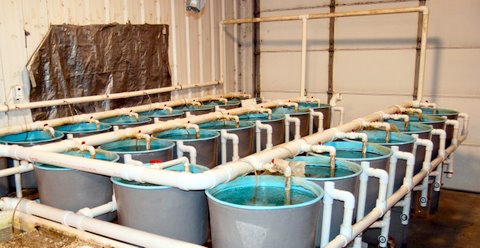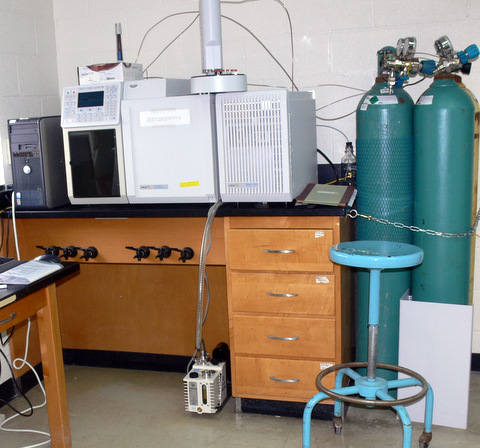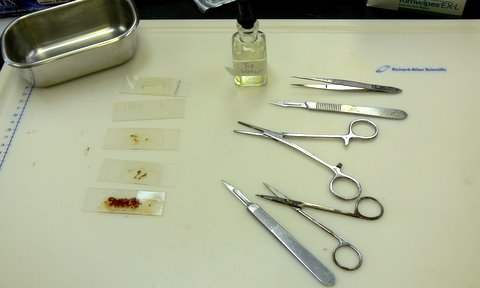Aquaculture Facilities

The Lincoln University Aquaculture Program began in 2002 with the construction of two aquaculture recirculation systems (RASs) in a machine shed. It was expanded to include 22 ponds, two research facilities, nutrition and fish health labs on two farms and several main campus buildings. A new indoor facility was built in 2012 centralizing the research facilities at the George Washington Carver Farm. The indoor facilities are designed for basic and applied research involving spawning, larviculture, grow out and nutritional studies. Ponds are situated to enable research at near commercial scale.
Lincoln University has the largest aquaculture research program and facilities in the state of Missouri and is among the largest in the Midwestern United States.
Ponds
The first set of Aquaculture Research ponds were constructed at the George Washington Carver Farm in 2005. Six one-tenth acre ponds were built followed by four more in 2007. Twelve one-quarter acre ponds and a fish holding facility were added in 2008.



Pictured above left to right: protective netting being placed around pond, students seining fish and dock with feeding ring.
Carver Indoor Facility
The two original RASs built in 2002 are still in use today at the George Washington Carver Farm. The room has been expanded to include areas for spawning, hatchery and larval rearing.



Pictured above left to right: original RASs built in 2002, 40 liter RAS and sunfish breeding with nests and males.
Busby Indoor Facility
A swine building at the Alan T. Busby Research Farm was remodeled for aquaculture research in 2004. It is equipped with numerous RASs and flow through systems. Multiple filtration systems are used to showcase the different types. Large areas are devoted for spawning, larval rearing, grow out and nutritional studies. All systems will eventually be moved to the new research facility that will be constructed at George Washington Carver Farm.

Alan T. Busby Research Farm




Pictured above left to right: brine shrimp (Artemia) cultures for larval fish feeding, larger 850 liter RASs for growout and nutritional studies, 40 liter RASs for nutritional studies and 10-gallon flow-through system.
Nutrition Lab
A nutritional laboratory was established in 2006 in Founders Hall on the main campus. The lab analyzes feeds and tissues for proximate analysis, energy, fatty acids and other nutrient information.






Pictured above left to right: GC Mass Spec, distillation unit, student titrating a crude nitrogen sample, muffle furnace, student entering data and cold extracted feed made in adjoining room.
Fish Health Lab
A fish health laboratory was set up in 2005 within the Small Animal Research Facility. The lab performs fish health services including quarantine, microbiological analysis, sensitivity testing, parasite identification, water quality analysis, fish necropsies and Coulter Counter analysis of fish blood and fluids.





Pictured above left to right: normal and same age lordosis/scollosis sunfish, water quality kit, dissection kit, chemical weigh out and quarantine tanks.
